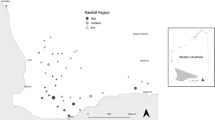Abstract
The idea of providing technical assistance to farmers in the United States had its origins in the mid 19th century as universities became more egalitarian. Some, including Professor Liberty Hyde Bailey at Cornell University, promoted the need for rural development and created the idea of extension — taking the research results to the farmer. Today the Cooperative Extension Service flourishes and there remains a strong demand for mission-oriented research with the accompanying need to translate those findings into practice for agricultural industries. A research program on grapevine powdery mildew is examined as a model for addressing management challenges faced by growers. The research was carried out systematically; each project was designed to answer specific questions and thereby contribute to the overall goal of improved disease management. Engagement with growers occurred through formal extension programs, annual presentations of the research to growers and industry grant review panels, and more general interactions at events, meetings, expositions, and through surveys. Translation of researchfindings is a fundamental component of mission-oriented research programs; it serves to keep the program grounded, allows one to see the big picture, keeps the program focussed on solving problems that are relevant to stakeholders, fosters collaboration, and provides broad training for the next generation of scientists. It is our opinion that it also fosters creativity and excellence in research and education if scientists are sincerely committed to a mission of finding solutions to some of the most difficult disease management problems facing their stakeholders.
Similar content being viewed by others
References
Boyer EL (1990) ‘Scholarship reconsidered: priorities of the professoriate.’ (Carnegie Foundation for the Advancement of Teaching: Princeton, NJ) 147 pp.
English-Loeb G, Norton AP, Gadoury DM, Seem RC, Wilcox WF (2007) Biological control of grape powdery mildew using mycophagous mites. Plant Disease 91, 421–429. doi: 10.1094/PDIS-91-4-0421
Ficke A, Gadoury DM, Seem RC, Godfrey D, Dry IB (2004) Host barriers and responses to Uncinula necator in developing grape berries. Phytopathology 94, 438–445. doi: 10.1094/PHYTO.2004.94.5.438
Gadoury DM, Pearson RC (1988) Initiation, development, dispersal, and survival of cleistothecia of Uncinula necator in New York vineyards. Phytopathology 78, 1413–1421.
Gadoury DM, Pearson RC (1990a) Ascocarp dehiscence and ascospore discharge in Uncinula necator. Phytopathology 80, 393–401. doi: 10.1094/Phyto-80-393
Gadoury DM, Pearson RC (1990b) Germination of ascospores and infection of Vitis by Uncinula necator. Phytopathology 80, 1198–1203. doi: 10.1094/Phyto-80-1198
Gadoury DM, Pearson RC (1991) Heterothallism and pathogenic specialization in Uncinula necator. Phytopathology 81, 1287–1293. doi: 10.1094/Phyto-81-1287
Gadoury DM, Seem RC, Ficke A, Wilcox WF (2003) Ontogenic resistance to powdery mildew in grape berries. Phytopathology 93, 547–555. doi: 10.1094/PHYTO.2003.93.5.547
Gadoury DM, Wakefield LM, Seem RC, Cadle-Davidson L, Dry IB (2004) Preliminary studies of signaling and sporulation in Uncinula necator. Phytopathology 94, S33.
Gadoury DM, Seem RC, Wilcox WF, Kennelly MM, Magarey PA, Dry IB, Gubler D, Pscheidt JW, Grove G, Sutton TB, Ellis MA, Stevenson KL, Maixner M, Evans KJ (2006) Modelling and mapping the relationship between climate and ontogenic resistance to the major fungal diseases of grapevine. In ‘Proceedings of the 5th international workshop on grapevine downy and powdery mildew’. (Eds I Pertot, C Gessler, DM Gadoury, D Gubler, H-H Kassemeyer, P Magarey) pp. 157–159 (Istituto Agrario di San Michele all’Adige: San Michele all’Adige, Italy)
Gadoury DM, Seem RC, Wilcox WF, Henick-Kling T, Conterno L, Day A, Ficke A (2007) Effects of diffuse colonization of grape berries by Uncinula necator on bunch rots, berry microflora, and juice and wine quality. Phytopathology 97, 1356–1365. doi: 10.1094/PHYTO-97-10-1356
Kellogg Commission on the Future of State and Land-Grant Universities (1999) Returning to our roots: the engaged institution. Report 3. National Association of State Universities and Land-Grant Colleges, Washington DC. 57 pp.
Moyer MM, Gadoury DM, Wilcox WF, Seem RC (2008a) Seasonal release of ascospores by Erysiphe necator. Phytopathology 98, S109.
Moyer MM, Gadoury DM, Wilcox WF, Seem RC (2008b) Development of an advisory system for grapevine powdery mildew in eastern North America: a reassessment of epidemic progress. Phytopathology 98, S190.
Moyer MM, Gadoury DM, Dry IB, Cadle-Davidson L, Seem RC (2009) Effects of low temperature events on host susceptibility and on infection, colony development and survival of Erysiphe necator. Phytopathology 99, S89.
Pearson RC, Gadoury DM (1987) Cleistothecia, the source of primary inoculum for grape powdery mildew in New York. Phytopathology 77, 1509–1514. doi: 10.1094/Phyto-77-1509
Pool RM, Pearson RC, Welser MJ, Lakso AN, Seem RC(1984) The influence of powdery mildew on the yield and growth of Rosette grapevines. Plant Disease 68, 590–593. doi: 10.1094/PD-69-590
Wakefield L, Gadoury DM, Seem RC, Cadle-Davidson L, Cadle-Davidson M, Dry IB (2007) Differential gene expression pre- and post-sporulation in the grapevine powdery mildew pathogen. Phytopathology 97, S119.
Author information
Authors and Affiliations
Corresponding author
Additional information
Presented as a Keynote Address at the 17th Biennial Conference of the Australasian Plant Pathology Society, September, 2009, Newcastle.
Rights and permissions
About this article
Cite this article
Seem, R.C., Gadoury, D.M. Translating research into the field: how it started, how it is practised and how we carry out grape powdery mildew research. Australasian Plant Pathology 39, 36–42 (2010). https://doi.org/10.1071/AP09063
Received:
Accepted:
Issue Date:
DOI: https://doi.org/10.1071/AP09063




